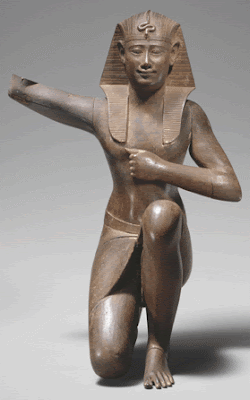
The art of ancient Egypt continues to captivate us with its enduring beauty and enigmatic qualities. Among these captivating elements are the so-called "photonic" woodcarvings, a specific type of artwork that exhibits unusual light-altering properties. Unlike their well-understood painted and sculpted counterparts, photonic woodcarvings remain shrouded in mystery, sparking debate and igniting the imaginations of archaeologists, scientists, and art enthusiasts alike. This exploration delves into the fascinating world of photonic Egyptian woodcarvings, examining their characteristics, potential explanations, and the ongoing quest to unravel their secrets.
Imagine a wooden carving that seems to shimmer and change color depending on the angle of light. This is the captivating mystery surrounding photonic Egyptian woodcarvings. These artworks, primarily found in tomb chambers and sarcophagi, display an unusual interaction with light, exhibiting iridescent effects and subtle color variations. While the exact cause of this phenomenon remains debated, several intriguing theories have emerged, adding to the allure of these enigmatic creations.
H2: Beyond the Canvas: Characteristics of Photonic Woodcarvings
Photonic woodcarvings stand out from their more conventional counterparts due to their unique interaction with light. Here's a breakdown of some key characteristics:
- Iridescent Effects: The carvings exhibit a subtle play of color, often appearing to shimmer or change hue depending on the viewing angle and light source.
- Subtle Color Variations: These woodcarvings may display a muted yet dynamic range of colors, shifting from blues and greens to golds and coppers.
- Material Composition: While the exact composition varies, these carvings are typically made from sycamore or cedarwood, both commonly used in ancient Egypt.
- Location and Context: Photonic woodcarvings are primarily found in tombs and sarcophagi, suggesting their potential role in funerary rituals or beliefs.
- Limited Quantity: The existence of photonic woodcarvings remains relatively rare, further adding to their enigmatic nature.
Theories of Illumination: Unveiling the Mystery Behind the Light
The cause of the light-altering properties in photonic woodcarvings has sparked numerous theories and ongoing scientific investigation. Here are some of the leading explanations:
- Microscopic Manipulation: Some theories propose that the wood surface was treated with microscopic textures or coatings that diffract light, creating the iridescent effects.
- Chemical Treatments: Another theory suggests the use of specific chemicals or resins applied to the wood, potentially interacting with light in unique ways.
- Organic Materials: The presence of naturally occurring minerals or organic residues within the wood may contribute to the light-altering phenomenon.
- Layered Structures: The possibility of layered structures or microscopic channels within the wood is explored, potentially causing light interference and color effects.
- Advanced Technical Skills: The intricate nature of the carvings and the precise control over the light effects suggest a high level of technical knowledge among the ancient Egyptian artisans.
A Legacy of Light and Mystery: The Enduring Allure of Photonic Woodcarvings
The enigma surrounding photonic woodcarvings adds another layer of fascination to the already rich tapestry of ancient Egyptian art. Here's why these enigmatic artworks continue to capture our attention:
- A Window into Ancient Technology: These woodcarvings may hold clues about advanced woodworking techniques and material manipulation skills of the Egyptians.
- A Connection to the Divine: The association with light and its transformative properties could suggest a connection to the Egyptians' beliefs about the afterlife.
- A Spark for Scientific Inquiry: Photonic woodcarvings continue to challenge scientists and conservators, prompting ongoing research and innovation in material science and conservation techniques.
- A Testament to Artistic Expression: Beyond the mystery, these woodcarvings represent a captivating form of artistic expression, pushing the boundaries of light and form.
- A Legacy of Inspiration: The enigmatic nature of photonic woodcarvings continues to inspire contemporary artists and designers to explore new ways of manipulating light and materials in their creations.
Consultation:
Intrigued by the wonders of ancient Egypt and the mysteries of photonic woodcarvings? Numerous museums and online resources offer further exploration. Consider visiting exhibitions featuring ancient Egyptian artifacts, or delve deeper into scientific research articles exploring the potential explanations behind these captivating artworks. With continued investigation and collaboration, perhaps one day we can unlock the secrets held within the shimmering surfaces of these enigmatic creations.
